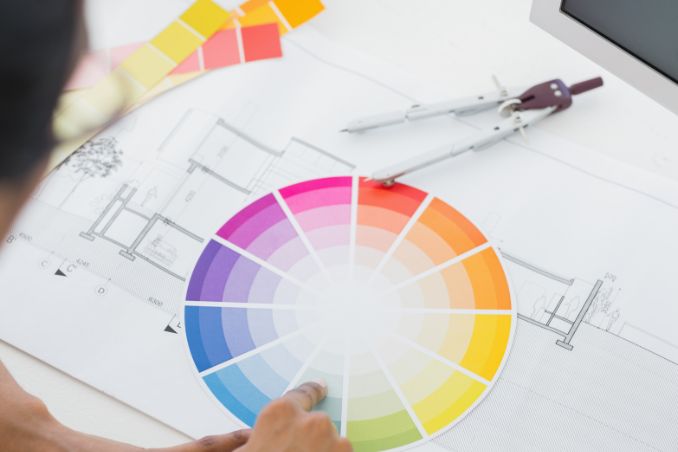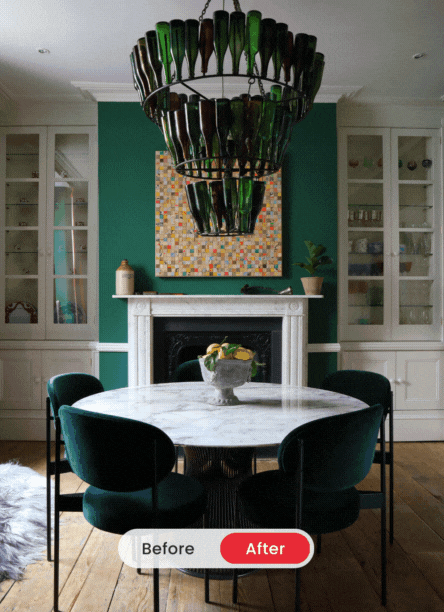Understanding the basics of interior design
Before you can start to identify what works for you, it’s worth understanding established interior design styles. A few examples are contemporary, traditional, country house, and minimalist. Some background reading will give you a basic framework of ideas and language from which to base your dialogue with designers or suppliers.

Finding your design inspiration
Looking at other homes is, of course, a great way to get ideas. Do this through popular interior design magazines like Elle Decoration and Ideal Home, journals, television, and social media. However, inspiration is eclectic and you can also be inspired by art, nature, and your own personal history. The next step is to transform this inspiration into design concepts. An experienced interior designer can really help with this process. And if you aren’t sure where to begin our Pointer Package is designed to get your inspiration flowing in an hour. We help with whatever you need so you can develop your own ideas rather than mimicking what you’ve seen on Insta!

Colour theory and its impact on interior design
Theming by colour can be really helpful in building a certain ambiance. Colour theory outlines how different colours affect our mood. Yellows and oranges tend to feel dynamic and creative, blues and greens are more calm, for example. The colour wheel can be helpful in identifying which colours sit harmoniously and which contrast well. With this base of knowledge, an interior designer knows when to break these rules to create an original and authentic space.
Choosing the right furniture and decor
There’s no right order in which to select furniture and decor. A beloved antique dresser that’s been handed down through generations might set the tone for your dining room design concept. Alternatively, you may commission a bespoke piece of furniture to reflect your initial inspiration for a room. The key thing, however you choose your furniture and decor, is that it should always be intentional. This stops a room from appearing cluttered and confused.
Lighting: A crucial element of interior design
This part of design is arguably what makes a room truly inspiring. Different layers of lighting create a sense of depth so your room really comes alive. Ambient lighting is your general wash which illuminates the room and should ideally be variable. To highlight specific areas or things, like a bookcase or sculpture, employ accent lighting. Lastly, task lighting is a functional layer which helps you to focus on such things as reading, craft, or chores. The three layers must work both in unison and independently. This is why the placement of different kinds of illumination, from spotlights to pendants to lamps, is so instrumental in room design.

Creating a focal point in your space
A focal point need not be a television! Try not to think of it as something that constantly demands the attention. You can create a focal point with a statement chandelier or a piece of art. But a focal point doesn’t have to be one specific item. Indeed, a corner of greenery or library of books works just as well. Think of it as something that is the heart beat of the room, sending its energy to the other features that you’ve chosen.
Maximising space and flow in small areas
Working with a small space is a really clever specialism. Even the tiniest room takes planning and thought to get it right. Think about how people will move through the space to avoid setting furniture that will cause a traffic jam. Bespoke furniture works really well here as it can multitask and use every nook and cranny without wasting valuable space.
The role of textures and patterns in interior design
You’ll find texture in even the most minimalist of rooms. Complementary smooth lines across surfaces are, after all, a texture in themselves. So we must think about how the contrasts or uniformity of texture and pattern create the ambience in the room. It’s this ambience that can make your room inspire you or comfort you. Don’t be afraid to break the rules here; clashing patterns can work incredibly well as long as they are placed intentionally.

Bringing it all together: Creating a cohesive design
With so many different layers in as many different areas to balance, bringing a room together can feel pretty daunting. Think of it as gathering many threads in an order that will weave together as you draw them in. I try not to be too calculated, since this can work against building a sense of character. Rather, a perfectly imperfect blend of features and textures that feel natural and cohesive will offer the most inspiring spaces.
See our interior design projects for more inspiration.
The power of inspiring interior design
Why should we strive towards inspiring interior design, then? Remember that ‘inspiring’ doesn’t just mean dynamic. You can be inspired both with warm comfort and with sparky vivacity. An inspiring room is one in which you can walk into and feel that – yes, this is my room. The challenge is in articulating your inspiration and moulding it into a physical design. This is why I’ve configured different interior design packages to suit any stage of design inspiration. If you want friendly and expert advice, our Pointer Package is the place to start. And, if it’s a curated solution you prefer, our Access Package will help transform your space.
Working together, we can capture the essence of inspiring interior design and make your vision, real!

